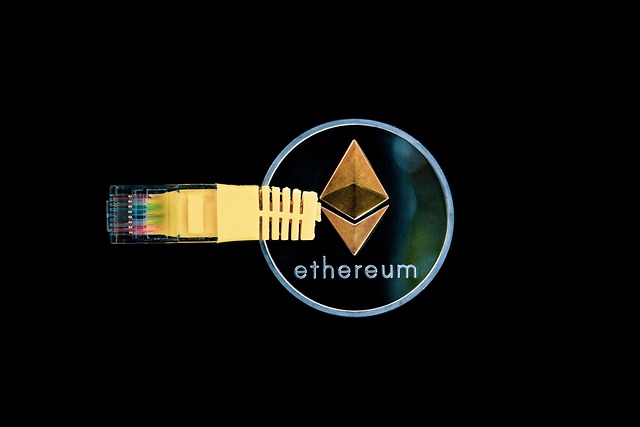Fed's Powell reasserts support for stablecoin legislation
As digital assets gain mainstream adoption, establishing a legal framework for stablecoins is a “good idea,” said US Federal Reserve Chair Jerome Powell.In an April 16 panel at the Economic Club of Chicago, Powell commented on the evolution of the cryptocurrency industry, which has delivered a consumer use case that “could have wide appeal” following a difficult “wave of failures and frauds,” he said.Powell delivers remarks at the Economic Club of Chicago. Source: Bloomberg TelevisionDuring crypto’s difficult years, which culminated in 2022 and 2023 with several high-profile business failures, the Fed “worked with Congress to try to get a […] legal framework for stablecoins, which would have been a nice place to start,” said Powell. “We were not successful.”“I think that the climate is changing and you’re moving into more mainstreaming of that whole sector, so Congress is again looking […] at a legal framework for stablecoins,” he said. “Depending on what’s in it, that’s a good idea. We need that. There isn’t one now,” said Powell.This isn’t the first time Powell acknowledged the need for stablecoin legislation. In June 2023, the Fed boss told the House Financial Services Committee that stablecoins were “a form of money” that requires “robust” federal oversight.Related: Stablecoins are the best way to ensure US dollar dominance — Web3 CEOSupport for stablecoin legislation is growingThe election of US President Donald Trump has ushered in a new era of pro-crypto appointments and policy shifts that could make America a digital asset superpower. Washington’s formal embrace of cryptocurrency began earlier this year when Trump established the President’s Council of Advisers on Digital Assets, with Bo Hines as the executive director. Hines told a digital asset summit in New York last month that a comprehensive stablecoin bill was a top priority for the current administration. After the Senate Banking Committee passed the GENIUS Act, a final stablecoin bill could arrive at the president’s desk “in the next two months,” said Hines.Bo Hines (right) speaks of “imminent” stablecoin legislation at the Digital Asset Summit on March 18. Source: CointelegraphStablecoins pegged to the US dollar are by far the most popular tokens used for remittances and cryptocurrency trading. The combined value of all stablecoins is currently $227 billion, according to RWA.xyz. The dollar-pegged USDC (USDC) and USDt (USDT) account for more than 88% of the total market. Magazine: Unstablecoins: Depegging, bank runs and other risks loom
Auradine raises $153M, debuts business group for AI data centers
Auradine, a Silicon Valley-based startup that specializes in equipment for AI data centers and Bitcoin mining, has announced a raise of $153 million in a Series C funding round. The new capital will go to increasing the company’s product suite of infrastructure for AI and blockchain technology.The Series C round was led by StepStone Group and included participation from Maverick Silicon, Premji Invest, Samsung Catalyst Fund, Qualcomm Ventures, and others. Auradine said the round was oversubscribed but did not disclose by how much or at what valuation the funds were raised.Along with the funding round, Auradine announced the launch of AuraLinks AI — its new business group dedicated to networking solutions targeting data centers’ energy and cooling costs.According to Goldman Sachs, energy demand due to AI data centers is expected to rise 165% by 2030. Building a small-scale AI data center can cost $10 million to $50 million, while large-scale AI data centers can cost hundreds of millions.Auradine designs and manufactures application-specific integrated circuits (ASICs) and related systems for Bitcoin mining. The company sees a strategic opportunity in the current US-China trade tensions and US President Trump’s push to boost domestic manufacturing. Among its main competitors is the Chinese-based firm Bitmain, which reportedly holds a 90% market share in the Bitcoin manufacturing sector. Related: How to mine Bitcoin: A beginner’s guide to mining BTCCrypto mining market to grow at CAGR 13% until 2034According to Precedence Research, the cryptocurrency mining market was valued at $2.5 billion in 2024 and is expected to have a compound annual growth rate of 13% until 2034. If that prediction is accurate, the mining market will reach a size of $8.2 billion by 2034.The rising Bitcoin hashrate, coupled with the increasing energy demands following each halving, is intensifying competition in the mining sector. As a result, the push for greater efficiency and advanced technology may create openings for new players to gain market share.Trump’s dual desires to make the US “the crypto capital of the planet” and bring manufacturing on-shore may also play a role. The US accounts for over 40% of the Bitcoin (BTC) hashrate, but US-based miners still rely heavily on China-manufactured rigs.Auradine’s $80 million Series B round, like its Series C, was oversubscribed. In total, the company has raised over $300 million across all funding rounds.Magazine: Asia Express: Bitcoin miners steamrolled after electricity thefts, exchange ‘closure’ scam
Market maker deals are quietly killing crypto projects
The right market maker can be a launchpad for a cryptocurrency project, opening the door to major exchanges and providing valuable liquidity to ensure a token is tradeable — but when the wrong incentives are baked into the deal, that market maker can become a wrecking ball.One of the most popular and misunderstood offerings in the market-making world is the “loan option model.” This is when a project lends tokens to a market maker, who then uses them to create liquidity, improve price stability, and help secure listings at a cryptocurrency exchange. In reality, it has been a death sentence for many young projects.But behind the scenes, a number of market makers is using the controversial token loan structure to enrich themselves at the expense of the very projects they’re meant to support. These deals, often framed as low-risk and high-reward, can crater token prices and leave fledgling crypto teams scrambling to recover.“How it works is that market makers essentially loan tokens from a project at a certain price. In exchange for those tokens, they essentially promise to get them on big exchanges,” Ariel Givner, founder of Givner Law, told Cointelegraph. “If they don’t, then within a year, they repay them back at a higher price.”What often happens is that market makers dump the loaned tokens. The initial sell-off tanks the price. Once the price has cratered, they buy the tokens back at a discount while keeping the profit.Source: Ariel Givner“I haven’t seen any token really benefit from these market makers,” Givner said. “I’m sure there are ethical ones, but the bigger ones I’ve seen just destroy charts.”The market maker playbookFirms like DWF Labs and Wintermute are some of the best-known market makers in the industry. Past governance proposals and contracts reviewed by Cointelegraph suggest that both firms proposed loan option models as part of their services — though Wintermute’s proposals call them “liquidity provision” services.DWF Labs told Cointelegraph that it doesn’t rely on selling loaned assets to fund positions, as its balance sheet sufficiently supports its operations across exchanges without relying on liquidation risk. “Selling loaned tokens upfront can damage a project’s liquidity — especially for small- to mid-cap tokens — and we’re not in the business of weakening ecosystems we invest in,” Andrei Grachev, managing partner of DWF Labs, said in a written response to Cointelegraph’s inquiry.Related: Who’s really getting rich from the crypto bull run?While DWF Labs emphasizes its commitment to ecosystem growth, some onchain analysts and industry observers have raised concerns about its trading practices.Wintermute did not respond to Cointelegraph’s request for comment. But in a February X post, Wintermute CEO Evgeny Gaevoy published a series of posts to share some of the company’s operations with the community. He bluntly stated that Wintermute is not a charity but in the “business of making money by trading.” Source: Evgeny GaevoyWhat happens after the market maker gets the tokens?Jelle Buth, co-founder of market maker Enflux, told Cointelegraph that the loan option model is not unique to the well-known market makers like DWF and Wintermute and that there are other parties offering such “predatory deals.”“I call it information arbitrage, where the market maker very clearly understands the pros and cons of the deals but is able to put it such that it’s a benefit. What they say is, ‘It’s a free market maker; you don’t have to put up the capital as a project; we provide the capital; we provide the market-making services,’” Buth said.On the other end, many projects don’t fully understand the downsides of loan option deals and often learn the hard way that they weren’t built in their favor. Buth advises projects to measure whether loaning out their tokens would result in quality liquidity, which is measured by orders on the book and clearly outlined in the key performance indicators (KPIs) before committing to such deals. In many loan option deals, KPIs are often missing or vague when mentioned.Cointelegraph reviewed the token performance of several projects that signed loan option deals with market makers, including some that worked with multiple firms at once. The outcome was the same in those examples: The projects were left worse off than when they started.Six projects that worked with market makers under the loan option agreement tanked in price. Source: CoinGecko“We’ve worked with projects that were screwed over after the loan model,” Kristiyan Slavev, co-founder of Web3 accelerator Delta3, told Cointelegraph.“It’s exactly the same pattern. They give tokens, then they’re dumped. That’s pretty much what happens,” he said.Not all market-maker deals end in disasterThe loan option model isn’t inherently harmful and can even benefit larger projects, but poor structuring can quickly turn it predatory, according to Buth.A listings adviser who spoke to Cointelegraph on the condition of anonymity echoed the point, emphasizing that outcomes depend on how well a project manages its liquidity relationships. “I’ve seen a project with up to 11 market makers — about half using the loan model and the rest smaller firms,” they said. “The token didn’t dump because the team knew how to manage price and balance the risk across multiple partners.”The adviser compared the model to borrowing from a bank: “Different banks offer different rates. No one runs a money-losing business unless they expect a return,” they said, adding that in crypto, the balance of power often favors those with more information. “It’s survival of the fittest.”But some say the problem runs deeper. In a recent X post, Arthur Cheong, founder of DeFiance Capital, accused centralized exchanges of feigning ignorance of artificial pricing fueled by token projects and market makers working in lockstep. “Confidence in the altcoin market is eroding,” he wrote. “Absolutely bizarre that CEXs are turning an absolute blind eye to this.”Still, the listings adviser maintained that not all exchanges are complicit: “The different tier exchanges are also taking really extreme actions against any predatory market makers, as well as projects that might look like they rugged. What exchanges do is they actually immediately lock up that account while they do their own investigation.”“While there is a close working relationship, there is no influence between the market maker and the exchange of what gets listed. Every exchange would have their own due diligence processes. And to be frank, depending on the tier of the exchange, there is no way that there would be such an arrangement.”Related: Crypto’s debanking problem persists despite new regulationsRethinking market maker incentivesSome argue for a shift toward the “retainer model,” where a project pays a flat monthly fee to a market maker in exchange for clearly defined services rather than giving away tokens upfront. It’s less risky, though more expensive in the short term.“The retainer model is much better because that way, market makers have incentives to work with the projects long term. In a loan model, you get, like, a one-year contract; they give you the tokens, you dump the tokens, and then one year after that, you return the tokens. Completely worthless,” Slavev said.While the loan option model appears “predatory,” as Buth put it, Givner pointed out that in all these agreements, both parties involved agree to a secure contract.“I don’t see a way that, at this current time, this is illegal,” Givner said. “If somebody wanted to look at manipulation, that’s one thing, but we’re not dealing with securities. So, that gray area is still there in crypto — [to] some extent the Wild West.”The industry is becoming more aware of the risks tied to loan option models, especially as sudden token crashes increasingly raise red flags. In a now-deleted X post, onchain account Onchain Bureau claimed that a recent 90% drop in Mantra’s OM token was due to an expiring loan option deal with FalconX. Mantra denied the claim, clarifying that FalconX is a trading partner, not its market maker.Edited LinkedIn copy of Onchain Bureau’s LinkedIn post. Source: Nahuel AngeloneBut the episode highlights a growing trend: The loan option model has become a convenient scapegoat for token collapses — often with good reason. In a space where deal terms are hidden behind NDAs and roles like “market maker” or “trading partner” are fluid at best, it’s no surprise the public assumes the worst.“We’re speaking up because we make money off the retainer model, but also, this [loan option model] is just killing projects too much,” Buth said.Until transparency and accountability improve, the loan option model will remain one of crypto’s most misunderstood and abused deals.Magazine: What do crypto market makers actually do? Liquidity or manipulation
Mantra post-OM token crash statement leaves key questions unanswered
Troubled decentralized finance (DeFi) platform Mantra released an official statement addressing the reasons for a 92% flash crash of its OM token on April 13.An April 16 announcement titled “Statement of Events: 13 April 2025” reiterates that the crash did not involve any token sales by the project itself, and the Mantra team remains fully functional and continues investigating the incident.Although Mantra CEO John Mullin previously said that the team was preparing a post-mortem, the new statement offered few new details about the reasons behind the rapid movement of OM tokens to exchanges and the subsequent liquidation cascade.Limited circulation of mainnet OM tokensThe post also reiterated that there are two types of OM tokens, with one being Ethereum-based (ERC-20) and the other running on Mantra’s mainnet.“The incident almost exclusively involved ERC-20 OM, as ERC-20 OM represents virtually the entire liquid market,” Mantra said in the statement.Launched in August 2020, the original ERC-20 OM token has a fixed supply of 888.8 million OM, with 99.9% of these tokens being in public circulation as of April 15.However, Mantra mainnet OM tokens had only 77.5 million in circulation after the Mantra Chain minted an equivalent amount of OM in October 2024.Mantra’s conclusionsAdditionally, the post mentions a divergence in OM spot prices on OKX and Binance. The discrepancy began around 6:00 pm UTC, around an hour before the OM token’s crash, according to CoinGecko.Among its conclusions, Mantra stated that further information from its exchange partners will “provide more clarity on these events, adding:“We invite our centralized exchanges partners to collaborate on providing more clarity on trading activities during this time.”The Mantra team confirmed that it is preparing a support plan for OM that includes both a token buyback and a supply burn. No timeline for the rollout of this plan was provided.Related: Mantra CEO plans to burn team’s tokens in bid to win community trustAs previously reported by Cointelegraph, OKX CEO Star Xu called Mantra a “big scandal” in a post published hours following the crash. Mantra CEO Mullin also said Binance is the biggest holder of the OM token, citing Etherscan records.Cointelegraph contacted the Mantra team for further comment on the April 16 statement but did not receive a response by publication time.Magazine: Memecoins are ded — But Solana ‘100x better’ despite revenue plunge
OKX reenters US market following $505M DOJ settlement
Seychelles-based cryptocurrency exchange OKX announced that it is reentering the US market.According to an April 16 blog post, OKX will return to the United States market along with the appointment of former Barclays director Roshan Robert as its US CEO. Robert said in the post:“Today, I’m thrilled to announce the launch of OKX’s centralized crypto exchange and OKX Wallet in the United States, alongside the establishment of our regional headquarters in San Jose, California.“All existing Okcoin users will be migrated to the new platform, which Robert said will lead to a better overall experience. The promised improvements include deeper liquidity, lower fees and advanced trading tools.Source: OKXRelated: Standard Chartered and OKX pilot crypto, tokenized fund collateralsStep by stepOKX will not roll out the upgrade in one shot. Instead, the new platform will take a phased approach to onboard new customers. The exchange plans to follow the cautious approach with a nationwide launch later in 2025.“We’re beginning with a phased rollout for new customers to ensure a smooth and secure onboarding process, with a broader nationwide launch planned later this year,“ Robert said.OKX also promised integrations with local banks and support for major assets, including Bitcoin (BTC), Ether (ETH), USDt (USDT) and USDC (USDC). Robert noted that the company maintains a global proof of reserves for all its assets, which is published monthly by cybersecurity firm Hacken.Hacken had not responded to Cointelegraph’s request for comment by publication time.In addition to its trading platform, the firm is also rolling out OKX Wallet to its US-based customers. The wallet supports 130 blockchains and features a decentralized exchange (DEX) aggregator, allowing access to over 10 million tokens on platforms including Ethereum, Solana and Base.Related: Malta regulator fines OKX crypto exchange $1.2M for past AML breachesOKX gets out of US troublesThe report follows OKX hiring former New York Governor Andrew Cuomo to advise it over a federal probe that resulted in the firm pleading guilty to several violations and agreeing to pay $505 million in fines and penalties.The exchange admitted on Feb. 24 to operating an unlicensed money-transmitting business in violation of US Anti-Money Laundering laws. As a consequence, OKX agreed to pay $84 million worth of penalties while forfeiting $421 million worth of fees earned from primarily institutional clients.After the investigation concluded, OKX said it would seek out a compliance consultant to remedy the problems revealed by the federal probe and improve its compliance efforts. OKX’s CEO Star Xu wrote in a Feb. 24 X post:“Our vision is to make OKX the gold standard of global compliance at scale across different markets and their respective regulatory bodies.”OKX had not responded to Cointelegraph’s request for comment by publication timeMagazine: XRP win leaves Ripple and industry with no crypto legal precedent set
Ethereum could be AI’s key to decentralization, says former core dev
There is a “huge opportunity” for Ethereum to become a decentralized partner in solving current problems with artificial intelligence platforms, according to a former core Ethereum developer. Ethereum’s “biggest mainstream moment is waiting in the wings with AI,” said Eric Connor on X on April 15. While AI is on a fast track to reshape almost every aspect of our lives, it is “plagued by black-box models, centralized data silos, and privacy pitfalls,” Connor continued. However, these problems create an opportunity for Ethereum to shine, he said.Ethereum offers transparency through verifiable smart contracts, decentralization against big tech monopolies, aligned incentives via token economies, and built-in micropayment infrastructure, he added. Smart contracts can provide transparent records of AI model training processes and data sources, addressing the “black box” problem.However, major AI players may resist open models “as they profit from secrecy and control,” he said. Demand for transparency, fairness, and security will only grow, and that’s where Ethereum “offers an alternative path,” he added. “Ethereum already has the ethos with openness, collaboration and trust minimization, things that ethical and accountable AI needs.”By proactively building the tooling, research and real-world use cases, Ethereum can give AI developers a reason to embrace decentralized approaches, “and that could deliver mainstream adoption far beyond finance,” Connor concluded. The next frontier for crypto will be decentralizing AI, Zain Jaffer, co-founder of Vungle, told Cointelegraph earlier this year. Connor left the Ethereum community in January amid growing leadership concerns to pursue interests in AI. AI agents on EthereumEthereum may also be important for the development of agentic AI — an emerging and experimental technology, according to a recent post on the Ethereum blog. AI agents are software programs that use artificial intelligence to autonomously perform tasks, make decisions, learn from data, and adapt to changes, and they are growing in numbers on Ethereum.The Ethereum blockchain provides key advantages for AI agents, including access to transparent, real-time blockchain data, true digital asset ownership, and the ability to execute transactions and interact with smart contracts, it noted.Related: The future of digital self-governance: AI agents in cryptoThe post highlighted three notable projects, which were Luna, an autonomous virtual influencer that controls its own onchain wallet; ¡` ×AIXBT, an AI agent providing crypto market analysis; and Botto, a decentralized autonomous artist creating NFTs guided by community voting.Meanwhile, projects like Bankr and HeyAnon are simplifying blockchain interactions through conversational interfaces, allowing users to manage wallets and execute transactions via simple chat commands.Magazine: Bitcoin eyes $100K by June, Shaq to settle NFT lawsuit, and more: Hodler’s Digest
Trade wars could spur governments to embrace Web3 — Truebit
Escalating trade wars are rattling cryptocurrency markets — but they are also creating new use cases for blockchain networks, Truebit executives told Cointelegraph. On April 2, President Donald Trump announced plans to charge sweeping tariffs on US imports, prompting other nations to threaten retaliatory measures. Trump later paused the tariff rollout for certain countries — but the possibility of a global trade war still looms, especially after Trump reiterated his commitment to taxing Chinese goods. If high tariffs materialize, blockchain technology can play an important role in ensuring governments apply them fairly, according to the executives. Blockchain can “really help you prove provenance […] proving the chain of custody,” Federico Kattan, Truebit’s chief technology officer, told Cointelegraph. Trump’s proposed tariffs would transform global trade. Source: StatistaFor example, a company might “assemble or do some packaging in a low-tariff country and then import into the US at 10% instead of 58%… [but] blockchain can help establish where the product actually came from,” Kattan said.Blockchain networks can enhance supply chain transparency by recording every transaction on an immutable public ledger, greatly limiting the scope for fraud across trillions of dollars worth of imported goods. Trump’s proposed tariffs would impact $2.4 trillion worth of imports, according to a report by the Tax Foundation. Retaliatory measures by other countries could add to that figure. Truebit is a blockchain network specializing in helping users add trustless verification to a wide variety of applications. It is already in talks with software vendors servicing the US government and has been working on a European Union-funded project exploring Web3’s potential role in global supply chains, the executives said. “We’re not yet talking directly to governments, but to the software vendors trying to interface with them — because that’s where we want to be,” Jason Teutsch, Truebit’s CEO, said.Truebit’s native token has struggled since launching in 2021. Source: CoinGeckoRelated: Trade tensions to speed institutional crypto adoption — ExecsTruebit was launched in 2017 and launched its TRU token in 2021. The token has a fully diluted market capitalization of $20 million, according to CoinGecko.Trade war risksHowever, several other crypto executives cautioned that tariffs pose serious risks to blockchain networks’ integrity and accessibility to users. Worsening trade wars threaten to disrupt networks’ physical infrastructure, fragment regulatory regimes, and censor users, they said. “Aggressive tariffs and retaliatory trade policies could create obstacles for node operators, validators, and other core participants in blockchain networks,” Nicholas Roberts-Huntley, CEO of Concrete & Glow Finance, told Cointelegraph.Magazine: Financial nihilism in crypto is over — It’s time to dream big again
Circle’s EURC grows as trade war pushes euro higher — Analyst
The market cap of Circle’s Euro Coin (EURC), a euro-pegged stablecoin, is growing quickly as the ongoing trade war pushes the US dollar price lower. “In recent weeks, interest in the euro has grown tremendously” and “this interest has not escaped the Circle EURC stablecoin,” Obchakevich Research founder Alex Obchakevich wrote in a recent X post.The euro has risen by 2.2%, reaching its highest price since February 2022 at its current price of $1.13.Obchakevich said that amid this happening, decentralized finance (DeFi) protocol Aave saw €2.3 million of Euro Coin inflows in April alone. He further highlighted that EURC’s capitalization is growing at a rapid pace.Source: Obchakevich’sCoinMarketCap data shows EURC’s market cap rose from under $84 million at the end of 2024 to more than $198 million as of mid-April — a 136% increase year to date.Related: ECB exec renews push for digital euro to counter US stablecoin growthThe euro grows amid an increasingly harsh trade warThe euro’s recent rally comes as the US dollar weakens on the back of escalating trade tensions. Since Dec. 31, 2024, the dollar has dropped from 0.97 euro to 0.88 euro, a 9.3% decline against the euro.The US and European Union “are likely to reach an agreement on a trade deal that will stabilize the euro at $1.11 to the dollar,” Obchakevich said. Still, he expects the Euro Coin to keep growing:“EURC will continue to grow through integration with various payment systems and blockchains.“The analyst said that after launching on Ethereum, Euro Coin was also deployed on Avalanche, Base, Stellar, Sonic and Solana, leading to a growing supply. He shared his outlook on future market developments:“I predict EURC to grow to 400 million euros by the end of this year. This will be further impacted by MiCa regulatory support and economic challenges.“Related: Digital euro to be ‘most private electronic payment option’MiCA works in Circle’s favorEuro Coin and USDC (USDC) issuer Circle is reaping the rewards of its regulatory-friendly strategy. The firm’s products are the top euro and US dollar-pegged stablecoins that comply with the European Union’s Markets in Crypto-Assets (MiCA) regulation.The current stablecoin market leader is Tether, with its USDt (USDT) stablecoin currently having a market cap of $144 billion according to CoinMarketCap data. This is significantly higher than leading stablecoin USDC’s $60 billion market cap.Still, many expect this gap to shrink as the USDt keeps being pushed from the European Union’s market due to a lack of MiCA compliance. This trend culminated in the world’s leading crypto exchange, Binance, delisting USDt for its European Economic Area-based users to comply with the rules in March.Magazine: How crypto laws are changing across the world in 2025
Crypto markets ‘relatively orderly’ despite Trump tariff chaos: NYDIG
Crypto markets have been fairly stable amid wider market panic caused by US President Donald Trump’s “on-again, off-again” sweeping global tariffs, according to a New York Digital Investment Group (NYDIG) analyst.“Despite the carnage in traditional financial markets, the crypto markets have been relatively orderly,” NYDIG global head of research Greg Cipolaro said in an April 11 note. “Historically, in broad risk-off moves, we tend to see stresses show up in crypto markets. We have yet to see that.”Cipolaro said crypto perpetual futures rates have “been persistently positive,” with liquidations spiking on April 6 and 7 in the days after Trump first announced the tariffs on April 2 but only to a total of $480 million, which he added “was well below other notable liquidation events.”He noted that the price of Tether (USDT), a US dollar-tracking stablecoin widely used token in crypto trading, was below $1 but had “not experienced a sharp decline.” Trump unveiled a sweeping tariff regime on April 2 that lumped various levies on every country before pausing them for 90 days just hours after they came into effect on April 5 and instead charging a base tariff of 10%, besides China, which currently has tariffs of up to 145%.Traditional and crypto markets tanked after Trump’s April 2 tariff announcement, and many assets haven’t recovered to the same level as before their unveiling.Stocks, bonds and foreign exchange volatility rates all rose after Trump’s tariffs announcement. Source: NYDIGOver the weekend, the Trump administration caused more confusion with its tariffs, saying on April 13 that an April 11 decision to exempt many electronics from tariffs was temporary and they would still be hit with levies.Bitcoin fares well, declining volatility to make it widely attractiveCipolaro said that Bitcoin (BTC) didn’t escape the market volatility, “but at current prices has fared far better than many other asset classes.”He added that Bitcoin’s volatility hasn’t risen to historic levels, unlike the traditional markets, and “has been relatively stable” despite instability instigated by the Trump administration.“Perhaps investors are increasingly searching for stores of value not tied to sovereign countries and thus not affected by the trade turmoil.”Bitcoin is down 22.5% from its mid-January peak of over $108,000 and has traded flat over the past 24 hours at $84,730, according to CoinGecko.Cipolaro said the narrowing gap between Bitcoin’s volatility and other assets makes it “increasingly more appealing” to funds with risk parity portfolios — those that use risk to choose asset allocations.He added that investors are likely reducing their risk exposure but “perhaps some reallocation of asset mix to Bitcoin is one of the reasons it has been more buoyant.”Related: S&P 500 briefly sees ‘Bitcoin-level’ volatility amid Trump tariff war“Risk parity funds allocating to Bitcoin can help dampen its volatility — making the asset more attractive and potentially reinforcing a virtuous cycle of increased adoption and stability,” Cipolaro said.However, YouHodler chief of markets Ruslan Lienkha told Cointelegraph in an April 12 note that despite a wider market rebound, “technical indicators are painting a concerning picture.”He said a “death cross,” when the 50-day moving average crosses below the 200-day moving average, is potentially forming on Bitcoin and the S&P 500.Lienkha said the pattern is “generally considered a bearish signal for the medium term, suggesting that markets may struggle to sustain upward momentum without a clear catalyst or a stream of positive macroeconomic developments.” Magazine: Financial nihilism in crypto is over — It’s time to dream big again
Vitalik Buterin says the app layer needs ‘good social philosophy’ most
Ethereum co-founder Vitalik Buterin argues it’s Ethereum’s application layer, not its infrastructure layer, where Ethereum needs “good social philosophy” the most. The app layer is where developers build decentralized applications on top of Ethereum’s base infrastructure and where they make decisions about how these programs operate. In an April 12 post on the social media platform Warpcast, Buterin responded to a user’s argument that Ethereum needs a new generation of developers rooted in Ethereum’s core values to renew itself. He argued that it’s the app layer that needs this more. “Apps are 80% special purpose. What apps you build depends heavily on what ideas you have of what Ethereum apps, and Ethereum as a whole, are there to do for the world. And so having good ideas on this topic out there becomes crucially important,” Buterin said. Source: Vitalik ButerinIn comparison, Buterin says a programming language like C++ may not be as influenced by the creator’s ideology, as it is a general-purpose tool that doesn’t have much surface to be made worse or improved by social philosophy. “Imagine that C++ had been made by a totalitarian racist fascist. Would it be a worse language? Probably not,” he said.Ethereum’s layer 1 is similar to an extent, argued Buterin, though it is more exposed to philosophical influence, citing its move to proof-of-stake (PoS) and supporting light clients as examples. “Someone who doesn’t believe in decentralization would not add light clients, or good forms of account abstraction,” he said. “Someone who doesn’t mind energy waste would not spend half a decade moving to PoS, but the Ethereum Virtual Machine opcodes might have been roughly the same either way. So Ethereum is perhaps 50% general-purpose,” Buterin added. Apps with good social philosophy vs bad In a follow-up post, Buterin told a user that in his opinion, crypto privacy protocol Railgun, Web3 social protocol Farcaster, decentralized prediction market Polymarket and messenger app Signal are examples of apps with a good social philosophy. Source: Vitalik Buterin“You build apps that do the right thing behind the scenes by default. Signal is a reasonably good example of this, though it has significant flaws of its own. Farcaster is also a good example of this,” Buterin said.Related: Vitalik Buterin criticizes crypto’s moral shift toward gamblingOn the other hand, Buterin said the memecoin platform Pump.fun, the collapsed crypto ecosystem Terra, its native token Terra (LUNA), and the collapsed crypto exchange FTX are examples of bad social philosophy.“The differences in what the app does stem from differences in beliefs in developers’ heads about what they are here to accomplish,” he said. Magazine: Bitcoin eyes $100K by June, Shaq to settle NFT lawsuit, and more: Hodler’s Digest, April 6 – 12










